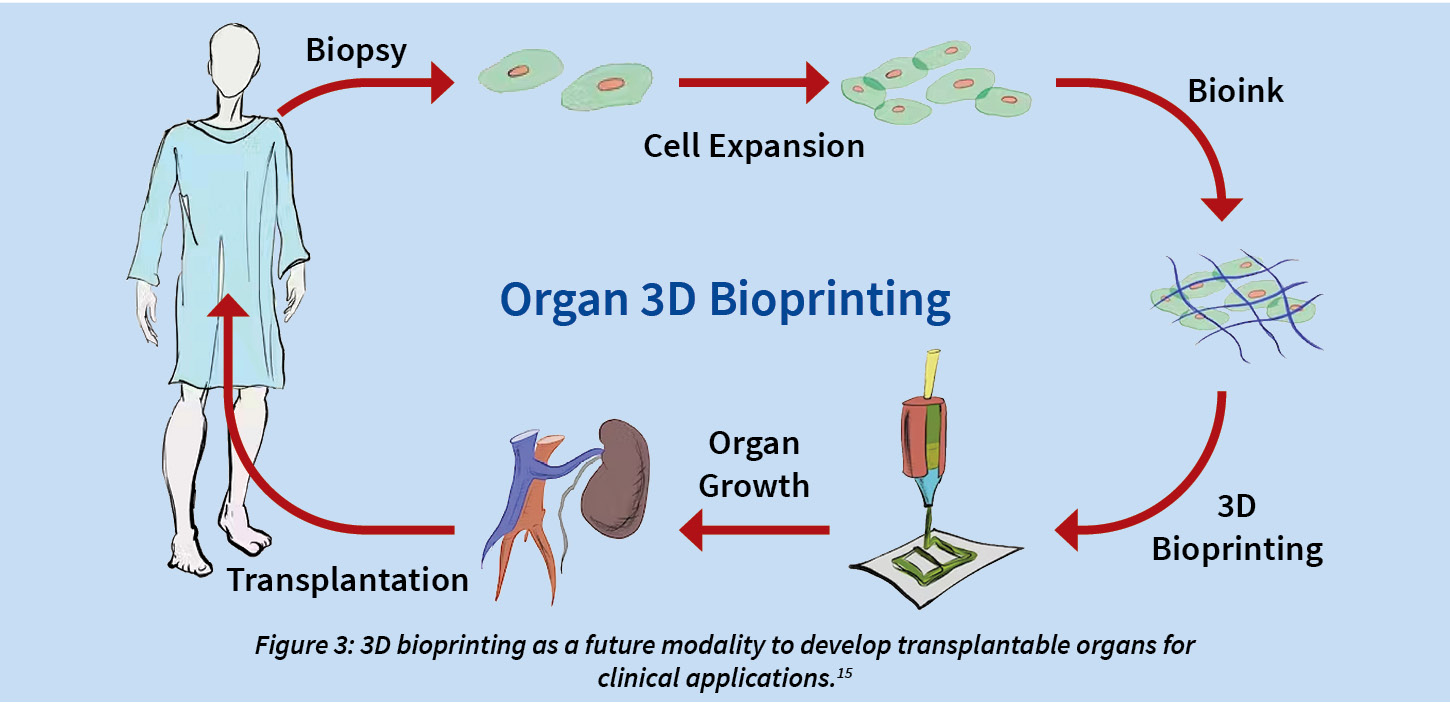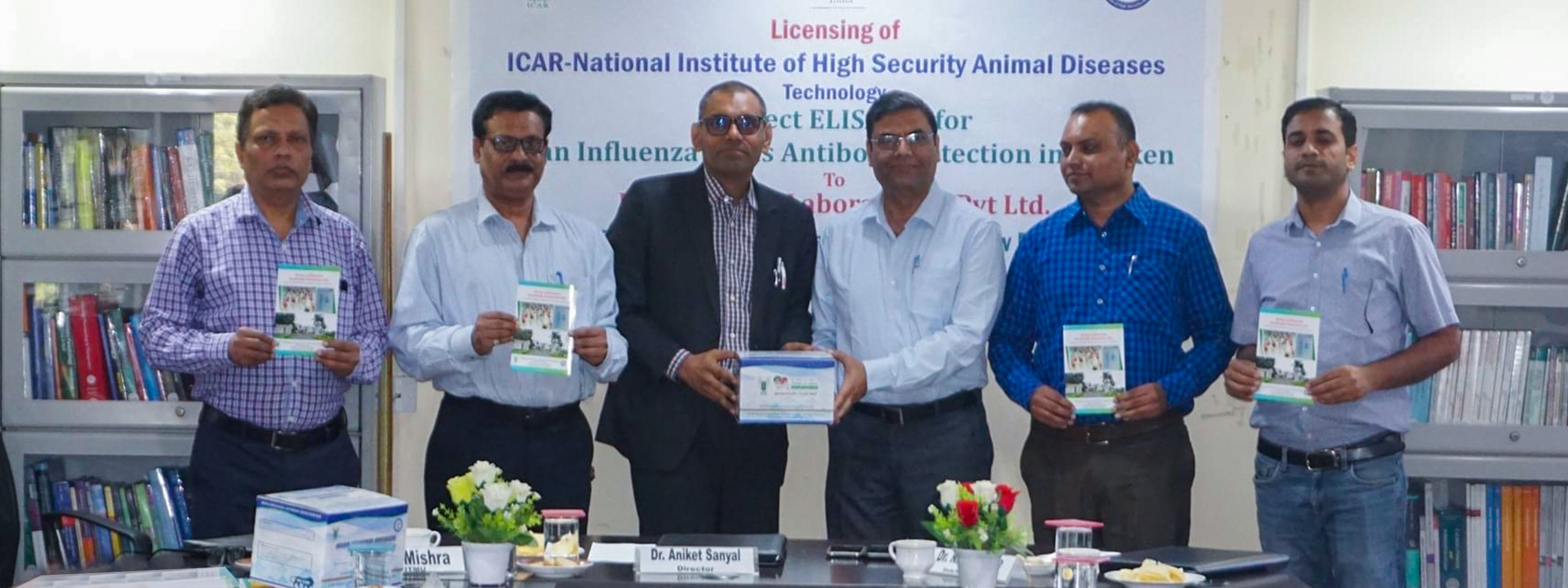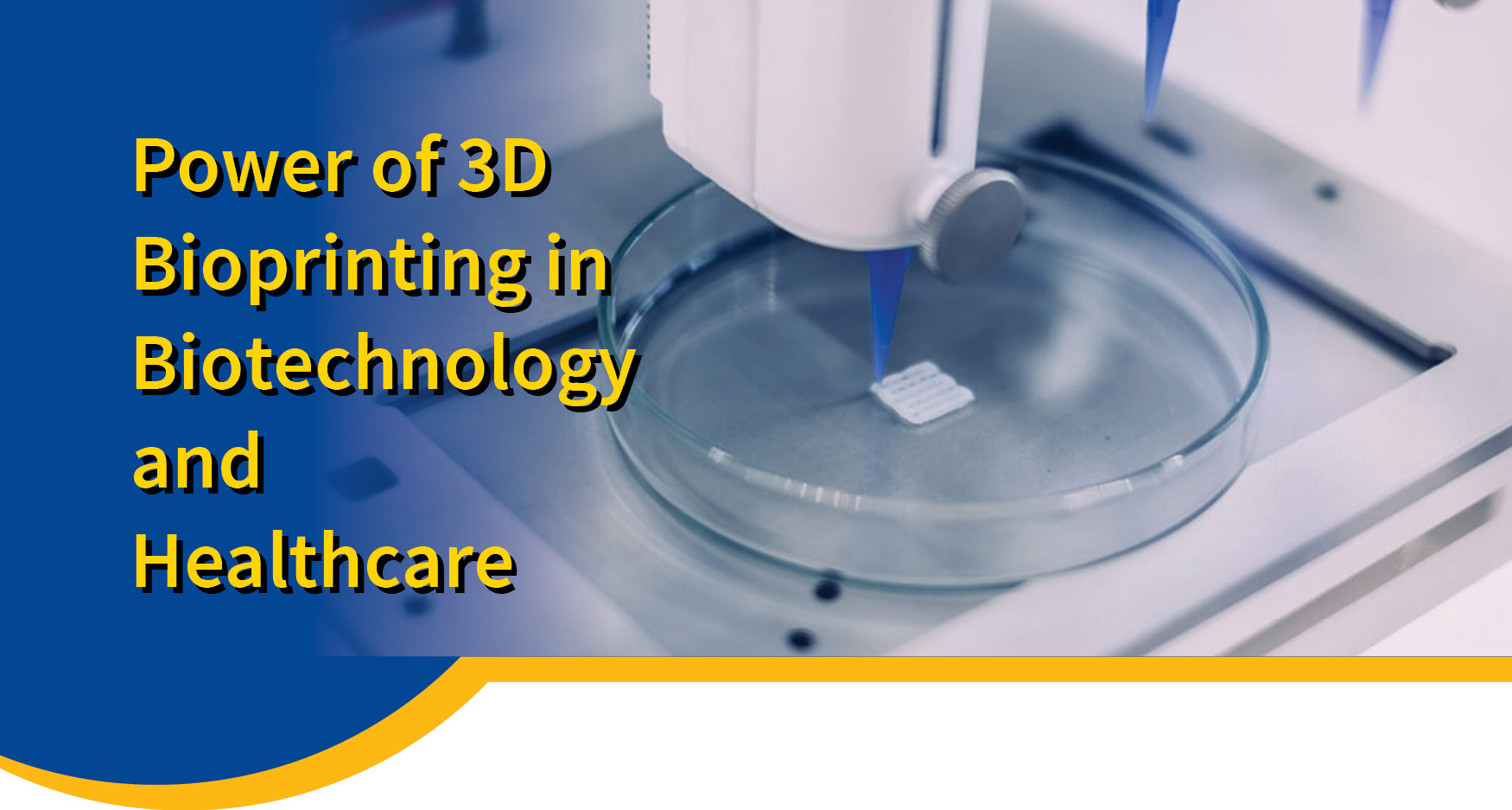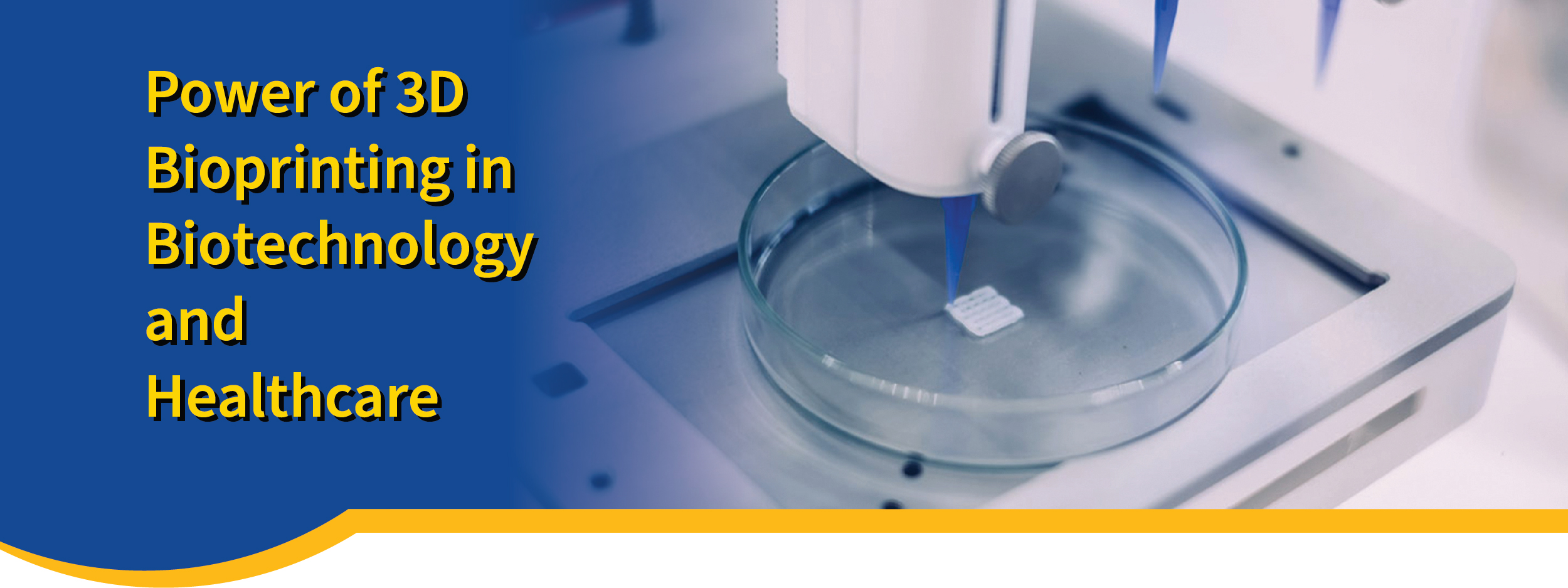Power of 3D Bioprinting in Biotechnology and Healthcare
Organ transplantation is a miracle of medical science. While a few people benefit from such transplants, many others are deprived of a second chance at life due to non-availability of donor organs.1. Thus, development of functional organs in a lab using patient’s own cells will be a boon to humankind.
However, developing a complex human organ poses a significant challenge. For example, human skin alone is composed of different cell types like keratinocytes, fibroblasts, adipose cells, endothelial cells, nerve cells, sweat glands, hair follicles, immune cells, etc. In order to develop an organ, it is essential to culture different cell types together in an environment that replicates the conditions that cells experience in a human body.
3D bioprinting holds a huge potential due to its ability to mimic tissue architecture and control tissue microenvironment. It demonstrates high experimental reproducibility, automotive capabilities, industrial scalability, and commercial adaptability.3
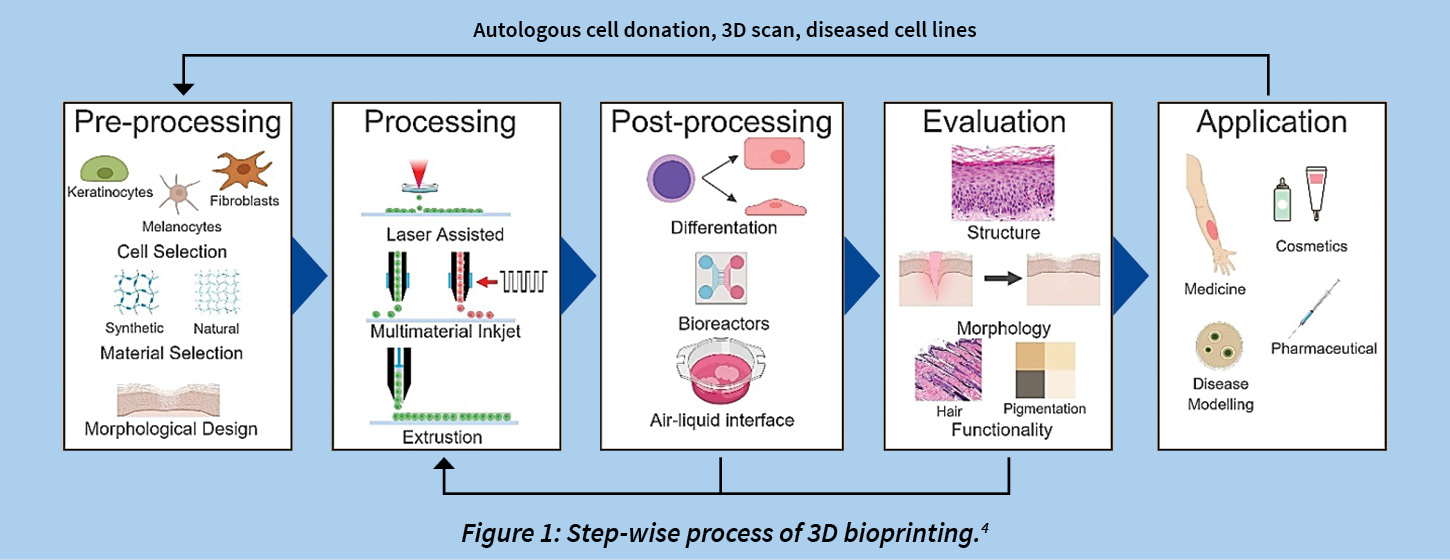
This additive manufacturing technique utilizes biomaterials and cells to develop functional tissues and organs. Biomaterials are mixed with cells and growth-promoting components to form bioinks. Owing to their biocompatible nature and tunable physiochemical properties, materials used to develop bioinks provide support to growing cells and mimic extracellular matrix of the tissue. The process of 3D bioprinting involves selection of cells and biomaterials. For example, hard biomaterials (like, polycaprolactone) are used to develop bone, whereas soft biomaterials (like, gelatin, alginate, etc.) are used to develop skin. Materials used for 3D bioprinting are composed of both natural and synthetic polymers. They are characterized for their physicochemical properties like chemical composition, rheological parameters like viscosity, mechanical strength, and biocompatibility. Bioinks are printed using methods like extrusion, laser- assisted and inkjet bioprinting. Bioprinted tissue constructs are cultured and evaluated for morphology and functional characteristics. 4-7
Global market size for 3D bioprinting was estimated to be $1.3 billion in 2022 and is projected to reach upto $3.3 billion by 2027, with a CAGR of 20.8%. Technological progress, increased use of 3D bioprinting in pharmaceutical and cosmetic sectors, and rising funding avenues are the market drivers for this field.8 Prominent market players include Cellink (BICO Group), Allevi, Regenhu, Poietis, etc. These companies offer 3D bioprinters and bioinks with diverse features, and applications.9 HiMedia Laboratories Pvt. Ltd. is also at the forefront of this development and working aggressively on some aspects of this technology. HiMedia offers innovative products and services like bioinks, organoid media, organoids, 3D bioprinted models, 3D bioprinters, characterization services, and skill development programs to support tissue engineering, regenerative medicine, and cultivated meat research in India.
This growing field has applications in the areas of tissue engineering, regenerative medicine, and drug development.
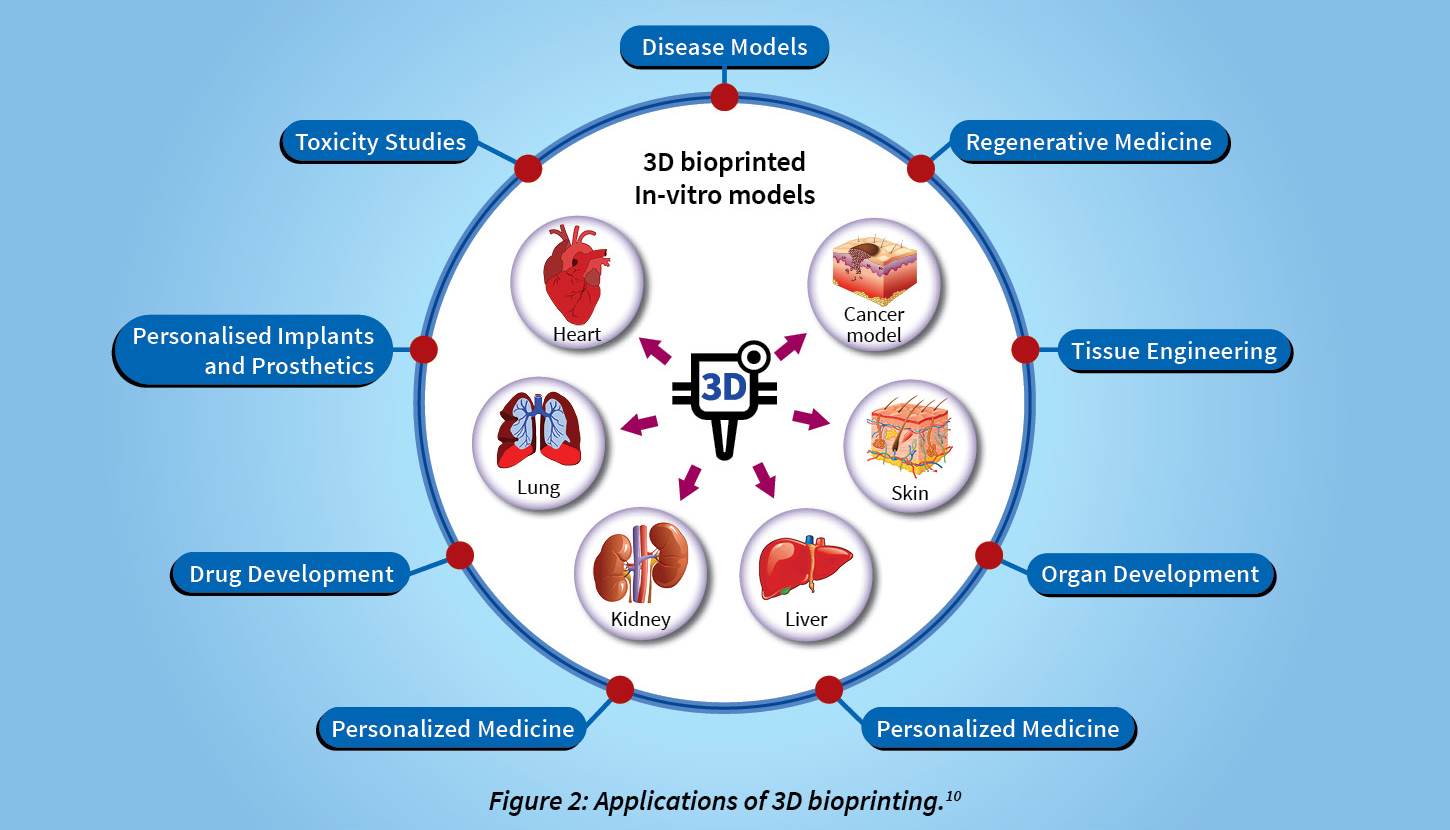
For example, a combination of alginate, gelatin, and collagen was used to construct a liver lobule using hepatocytes and endothelial cells. The bioprinted liver lobule exhibited higher levels of albumin secretion, urea production, cytochrome P450 activity, and expression of biomarkers like albumin, MRP2, and CD31 as compared to the non-bioengineered monolayer cultures.11,12 AuriNovo™, an autologous 3D bioprinted ear, was developed by 3DBio. It was constructed [MG8] [MK9] using patient’s own cells and implanted into the patient to treat a congenital defect. The autologously derived ear will significantly reduce the chances of graft rejection and other complications after implantation. This development is noteworthy because it has potential to help lakhs of patients waiting years for an organ donation; only to suffer complications because of continuous consumption of immunosuppressive drugs and immunological reactions of host body to stimulate graft rejection.13
Owing to higher complexity and physiological likeliness, 3D bioprinted models also offer as reliable drug screening models. Thus, these models possess the potential to reduce, refine, and replace animal experimentation in pharmaceutical drug and cosmetic testing protocols. Bioprinting will also facilitate the development of diseased organ models, thereby facilitating research on personalized medicine.14 Power of 3D bioprinting will be unleashed when lab-made transplantable organs will become a reality in healthcare sector. HiMedia is glad to contribute to this evolving field to benefit nation and the globe as a whole.
References- https://dghs.gov.in/content/1353_3_NationalOrganTransplant Programme.aspx
- https://www.ayming.co.uk/insights/opinion/3d-bioprinting-the-next-step-in-tailor-made-medicine/
- Augustine R, Kalva SN, Ahmad R, et al. 3D Bioprinted cancer models: Revolutionizing personalized cancer therapy. Translational oncology. Apr 2021;14(4):101015.doi:10.1016/j. tranon.2021.101015
- Loai S, Kingston BR, Wang Z, Philpott DN, Tao M, Cheng H-LM. Clinical Perspectives on 3D Bioprinting Paradigms for Regenerative Medicine. Regenerative Medicine Frontiers. 2019;1(1):e190004. e190004. doi:10.20900/rmf20190004
- Agarwal S, Saha S, Balla VK, Pal A, Barui A, Bodhak S. Current Developments in 3D Bioprinting for Tissue and Organ Regeneration–A Review. Frontiers in Mechanical Engineering. 2020;6(589171):1-22. doi:10.3389/fmech.2020.589171
- Khalaf AT, Wei Y, Wan J, et al. Bone Tissue Engineering through 3D Bioprinting of Bioceramic Scaffolds: A Review and Update. Life (Basel, Switzerland). Jun 16 2022;12(6)doi:10.3390/life12060903
- Jiang T, Munguia-Lopez JG, Flores-Torres S, Kort-Mascort J, Kinsella JM. Extrusion bioprinting of soft materials: An emerging technique for biological model fabrication. Applied Physics Reviews. 2019;6(1):011310. doi:10.1063/1.5059393
- https://www.marketsandmarkets.com/Market-Reports/3d-bioprinting-market-170201787.html
- https://www.grandviewresearch.com/industry-analysis/3d-bioprinting-market
- Chameettachal S, Yeleswarapu S, Sasikumar S, et al. 3D Bioprinting: Recent Trends and Challenges. Journal of the Indian Institute of Science. 2019/09/01 2019;99(3):375-403. doi:10.1007/ s41745-019-00113-z
- Ma L, Wu Y, Li Y, et al. Current Advances on 3D-Bioprinted Liver Tissue Models. Advanced healthcare materials. Dec 2020;9(24):e2001517. doi:10.1002/adhm.202001517
- Kang D, Hong G, An S, et al. Bioprinting of Multiscaled Hepatic Lobules within a Highly Vascularized Construct. Small. 2020;16(13):e1905505. doi:10.1002/smll.201905505
- https://www.businesswire.com/news/home/20220602005051/en/3DBio-Therapeutics-and-the-Microtia-Congenital-Ear-Deformity-Institute-Conduct-Human-Ear-Reconstruction-Using-3D-Bioprinted-Living-Tissue-Implant-in-a-First-in-Human-Clinical-Trial
- Mazzocchi A, Soker S, Skardal A. 3D bioprinting for high- throughput screening: Drug screening, disease modeling, and precision medicine applications. Appl Phys Rev. Mar 2019;6(1) doi:10.1063/1.5056188
- https://theconversation.com/the-next-pharmaceutical- revolution-could-be-3d-bioprinted-79676
